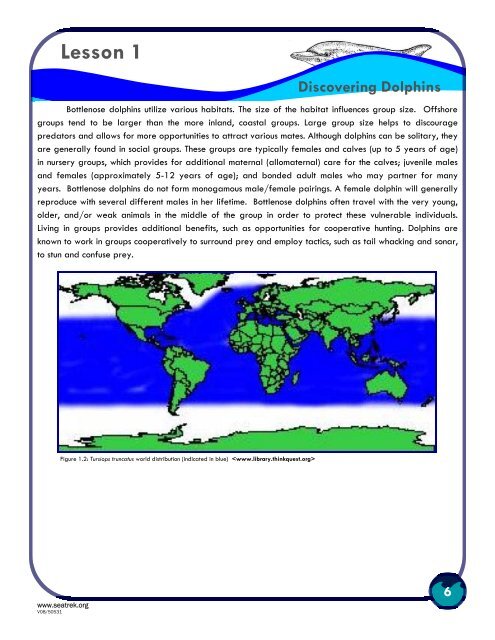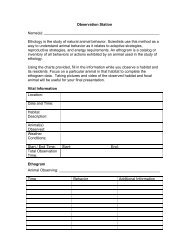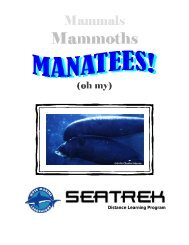LESSON 2 - SeaTrek Programs
LESSON 2 - SeaTrek Programs
LESSON 2 - SeaTrek Programs
You also want an ePaper? Increase the reach of your titles
YUMPU automatically turns print PDFs into web optimized ePapers that Google loves.
Lesson 1<br />
Discovering Dolphins<br />
Bottlenose dolphins utilize various habitats. The size of the habitat influences group size. Offshore<br />
groups tend to be larger than the more inland, coastal groups. Large group size helps to discourage<br />
predators and allows for more opportunities to attract various mates. Although dolphins can be solitary, they<br />
are generally found in social groups. These groups are typically females and calves (up to 5 years of age)<br />
in nursery groups, which provides for additional maternal (allomaternal) care for the calves; juvenile males<br />
and females (approximately 5-12 years of age); and bonded adult males who may partner for many<br />
years. Bottlenose dolphins do not form monogamous male/female pairings. A female dolphin will generally<br />
reproduce with several different males in her lifetime. Bottlenose dolphins often travel with the very young,<br />
older, and/or weak animals in the middle of the group in order to protect these vulnerable individuals.<br />
Living in groups provides additional benefits, such as opportunities for cooperative hunting. Dolphins are<br />
known to work in groups cooperatively to surround prey and employ tactics, such as tail whacking and sonar,<br />
to stun and confuse prey.<br />
Figure 1.2: Tursiops truncatus world distribution (indicated in blue) <br />
www.seatrek.org<br />
V08/50531<br />
6





